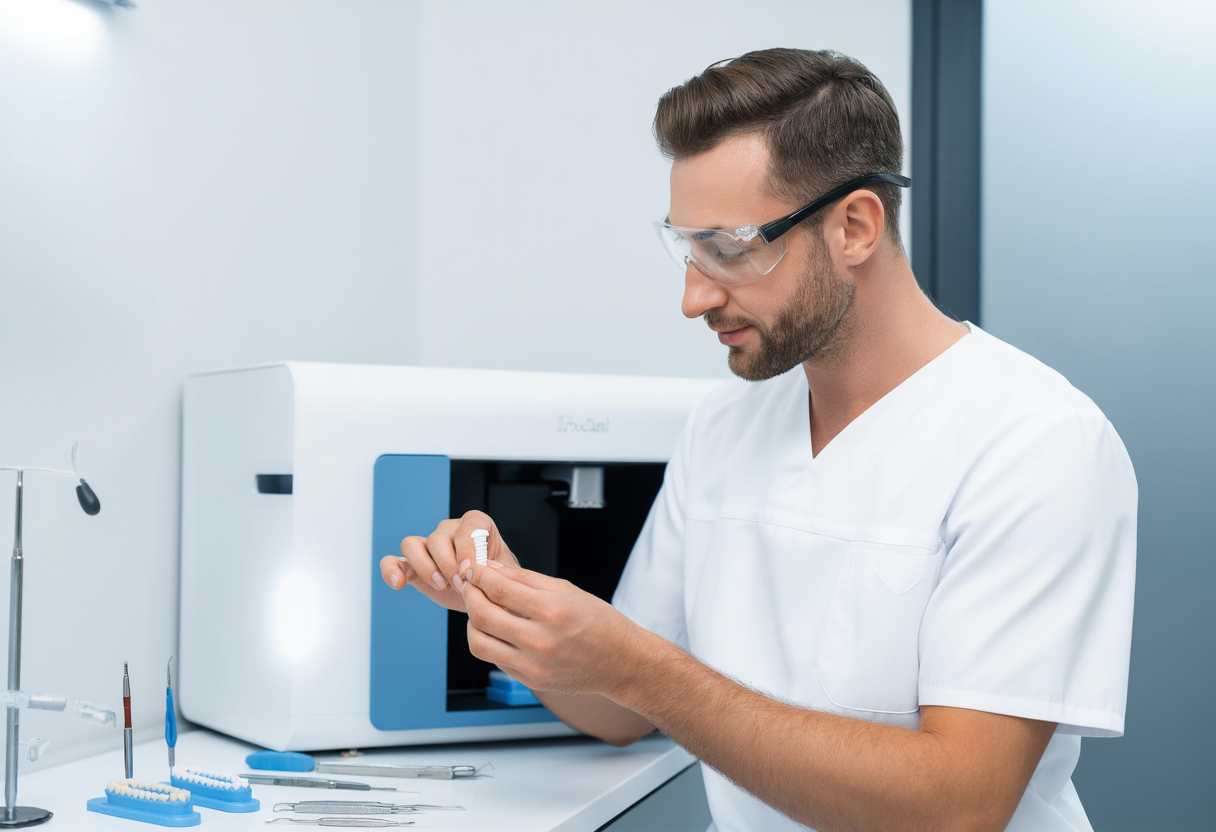The Future of Dentistry: How 3D Printed Dental Implants Are Revolutionizing Oral Care
As technology advances, 3D printed dental implants emerge as a game changer in dental care, offering patients tailored solutions that enhance comfort and effectiveness. This article explores their benefits, challenges, and the transformative effect on the dental industry.
What Are 3D Printed Dental Implants?
3D printed dental implants are innovative devices designed using cutting-edge additive manufacturing technology. Unlike traditional implants, which often rely on fixed shapes and sizes, 3D printed implants can be customized to fit each patient's unique dental anatomy perfectly. This customization arises from the precise digital scans obtained through imaging technologies, enabling practitioners to create implants tailored to individual needs. Consequently, the adoption of 3D printed dental implants leads to significantly improved patient outcomes and satisfaction. Moreover, the speed at which these implants can be produced allows for shorter waiting times, which is essential for both patients and dental professionals. In essence, 3D printed dental implants represent a significant leap forward in contemporary dental practices.
Benefits Over Traditional Implants
The advantages offered by 3D printed dental implants extend far beyond mere customization. Firstly, these implants often exhibit enhanced biocompatibility due to the materials used in their fabrication, which ensure better integration with the jawbone. This integration minimizes complications and enhances durability, making 3D printed dental implants a preferred option for many dentists. Secondly, the affordability of these implants is notable; while initial costs may seem high, the reduction in labor and material waste ultimately translates to overall lower prices for consumers. Additionally, the speed of production allows dentists to respond more rapidly to patient needs, thus improving dental services in practice. Overall, the multifaceted benefits of 3D printed dental implants position them as a progressive choice in modern dental care.
Challenges in Adoption
Despite their numerous advantages, the widespread adoption of 3D printed dental implants is not without challenges. Regulatory hurdles often slow down the pace of acceptance in many regions, as authorities strive to ensure patient safety and efficacy of new technologies. Furthermore, the initial investment in 3D printing equipment can deter smaller dental practices from making the shift. Additionally, some practitioners may lack the necessary training to implement this advanced manufacturing technique effectively. Lastly, there is an ongoing debate about the long-term durability of 3D printed implants compared to conventional options, raising questions around their longevity in the mouth. Navigating these challenges is crucial for the wider acceptance of 3D printed dental implants in clinical settings.
Transforming Patient Experience
From a patient perspective, the embrace of 3D printed dental implants marks a new era in comfort and care. Patients benefit from reduced surgical procedures and healing times, which translates to less time spent in the dental chair. Furthermore, the precision of these implants results in enhanced fit and function, ultimately leading to a more natural feel in the mouth. Patients also report higher satisfaction levels due to the aesthetic appeal of these implants, as they can be designed to match surrounding teeth seamlessly. Moreover, the personalization aspect of 3D printed dental implants empowers patients by involving them in the planning and design process, adding a layer of satisfaction to their treatment journey. Thus, the role of 3D printed dental implants in transforming patient experience is profound and evident.
The Commercial Impact on the Dental Industry
The emergence of 3D printed dental implants is reshaping the dental industry commercially. Dental practices that adopt this technology often find themselves at a competitive advantage, providing superior services to clients. Furthermore, the reduction in production costs allows practices to offer more affordable options, appealing to a broader patient demographic. Suppliers of dental materials and equipment are also increasingly focusing on 3D printing technologies, broadening their product offerings. Additionally, as awareness grows about the advantages of 3D printed dental implants, patient demand increases, prompting more practices to invest in this technology. Consequently, the commercial landscape for the dental industry is evolving, heavily influenced by the rise of 3D printed dental implants.
Conclusion: A New Dental Paradigm
In conclusion, 3D printed dental implants signify a remarkable shift in dentistry, merging technology with patient-centered care. While challenges remain, the benefits greatly outline their potential in transforming not only dental practices but also the patient experience. By embracing this innovation, the dental industry can enhance efficiency, affordability, and comfort—hallmarks of modern health care. As research continues and regulatory landscapes adapt, the prevalence of 3D printed dental implants will likely increase, marking a paradigm change in oral care.
